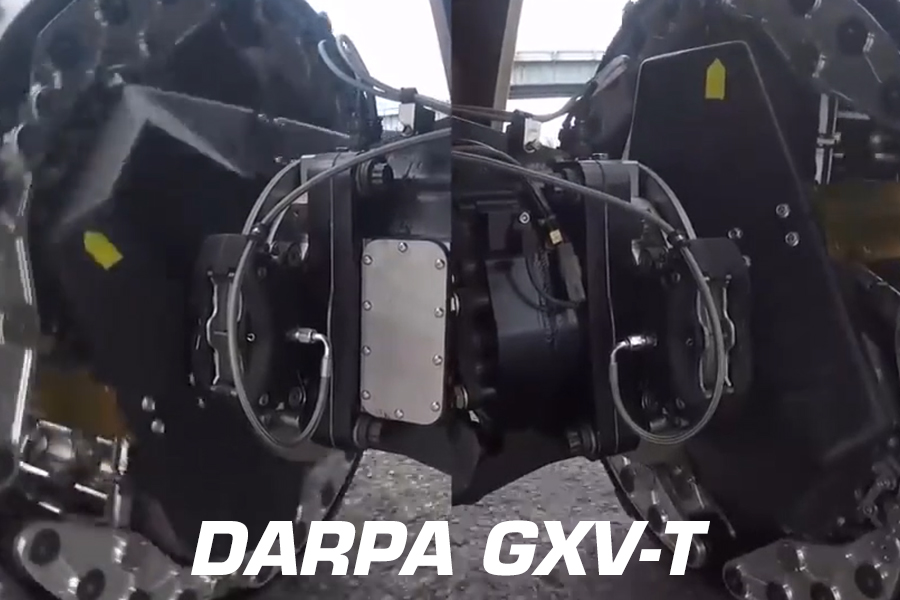
DARPA's Ground X-Vehicle Technologies (GXV-T)
DARPA’s Ground X-Vehicle Technologies (GXV-T) program aims to improve mobility, survivability, safety, and effectiveness of future combat vehicles without piling on armor.
Demonstrations, such as one in May at Aberdeen Test Center, have given potential military service transition partners an opportunity to observe technical progress on the GXV-T program, including:
Radically Enhanced Mobility
GXV-T envisions future combat vehicles that could traverse up to 95 percent of off-road terrain, including slopes and various elevations. Capabilities include revolutionary wheel-to-track that would enable access and faster travel both on and off-road, compared to existing ground vehicles.
- NREC's Reconfigurable Wheel-Track (RWT)
Wheels permit fast travel on hard surfaces while tracks perform better on soft surfaces. NREC demonstrated shape-shifting wheel-track mechanisms that transition from a round wheel to a triangular track and back again while the vehicle is on the move, for instant improvements in tactical mobility and maneuverability on diverse terrains.
Crew Augmentation
Traditional combat vehicle designs have small windows that improve protection but limit visibility. GXV-T sought solutions with multiple onboard sensors and technologies to provide high-resolution, 360-degree situational awareness while keeping the vehicle enclosed.
- NREC's Off-Road Crew Augmentation (ORCA)
ORCA aims to predict in real time the safest and fastest route and when necessary, enable a vehicle to drive itself off-road – even around obstacles. In Phase 2 testing, drivers using the ORCA aids and visual overlays traveled faster between waypoints and eliminated nearly all pauses to determine their routes. The team found autonomy improved either vehicle speed or risk posture, and sometimes both.